Welcome to Ceramic Review
Ceramic Review is the magazine for contemporary and historical ceramics, ceramic art and pottery.
Ceramic Review Issue 327
May/June 2024
Ceramic Review is the magazine for contemporary and historical ceramics, ceramic art and pottery.
May/June 2024
Victoria Claire Dawes creates slipware pottery infused with familiar family connections and her ideas about nostalgia. CR’s Annie Le Santo spoke to her to find out more
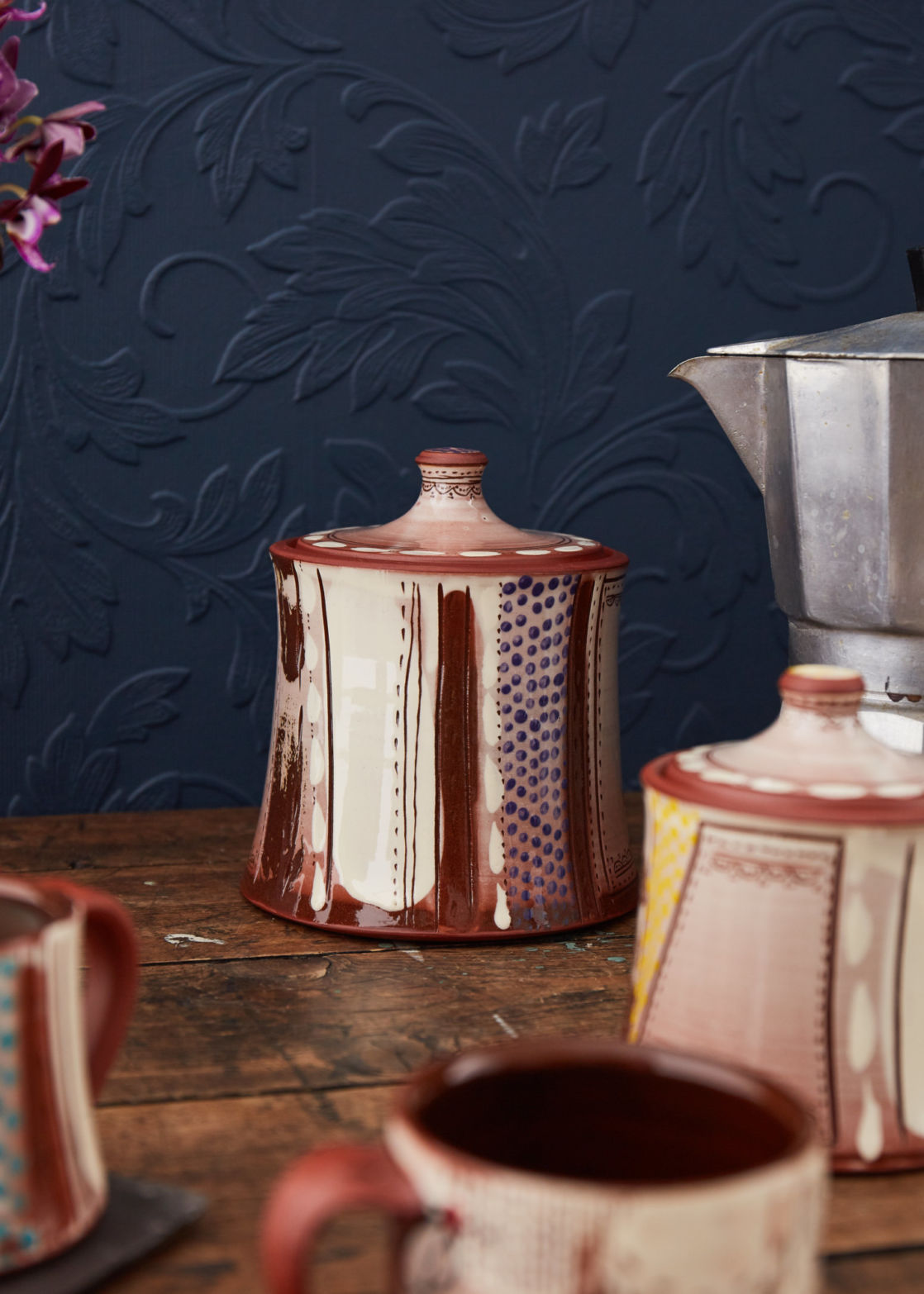
Work by Victoria Claire Dawes; photograph by Yeshen Venema
Ceramics isn’t a craft that you can simply pack into a suitcase and take on your travels. Bulky equipment, familiar tools and local clay can act as an anchor to a certain place, and for many ceramicists, once they have established their studio they tend to stay put. However, the chronology of Victoria Claire Dawes’ life has been defined by a series of departures and arrivals. From an early age she faced upheavals, some welcome and others less so. Despite this, impressively, her ceramics practice has remained consistent.
Dawes was born in Bristol, UK, but spent her early years hopping between Newcastle and New Zealand. Eventually, when she was nine years old, her family permanently emigrated to Dunedin on the South Coast of New Zealand for her father’s work as a surgeon. She remarks how as a teenager it never seemed like home to her: ‘I felt like my family moved me rather than it being something I had chosen. I knew that as soon as I was able to, I needed to go somewhere else.’
A PERSONAL JOURNEY
A short stint working at a drawing school in London when she was 17, was followed by yet another overseas relocation. In 2010, she landed in Wisconsin, USA, with the intention to train in outdoor education. By chance, extra gaps in her timetable at Northland College in Ashland led her to the ceramics course. ‘I didn’t think too deeply about the choice,’ she explains. ‘I just thought, “this will be fun”.’
By the end of her three years studying, Dawes had had as much of an impact on the course as it did on her. ‘My time at college began with repetitive throwing, working in stoneware and figuring out the gas kiln. I learnt so much but I felt disconnected between the making stage and the results of the firings,’ she says. ‘I told my tutors I wanted to work with terracotta. So they bought an electric kiln for bisque-firing that helped me with the process of testing materials.’
At one stage, Dawes was the only student in her class and she spent her days potting away in the department, exploring form and experimenting with slipware decoration. ‘I was very interested in asymmetry but I also wanted my pieces to be comfortable to use,’ she says.
While she could appreciate the ‘ceramics of the area’, a scene that was predominantly influenced by Warren Mackenzie – who was credited with bringing the Japanese Mingei style of pottery to Minnesota, fondly referred to as Mingei-sota – she was also captured by the rich red clay in the work of local potters Lisa Buck and the vibrant designs of Ursula Hargens. In contrast, she shied away from colour herself. Her comfort zone consisted of black, brown and white slips only. ‘This changed when I was at a workshop and the tutor, Liz Quakenbush, scared me into using colour,’ she recalls. ‘She told me I was “too much fun for this lack of colour” and so I slowly started to add it. The initial results were hideous for a while, but I did produce pieces that still influence what I make today.’
After graduating, Dawes was granted the Anonymous Potter Studio Fellowship at the Northern Clay Centre in Minneapolis. It was a year-long opportunity that allowed her precious time to develop her work without the need to sell it, and of course, plan her next move. ‘I looked through the CVs of the artists in the centre’s catalogues and came across the Yorkshire Artspace in the UK,’ she says. ‘It had always been a dream of mine to move back to the UK so I applied for their Starter Studio Programme.’ The Craft Council’s Hothouse scheme provided further guidance and a successful Kickstarter campaign helped to buy her first kiln and set up her studio at Persistence Works in Sheffield. All three of these platforms were crucial in helping her find her place in an unfamiliar market.
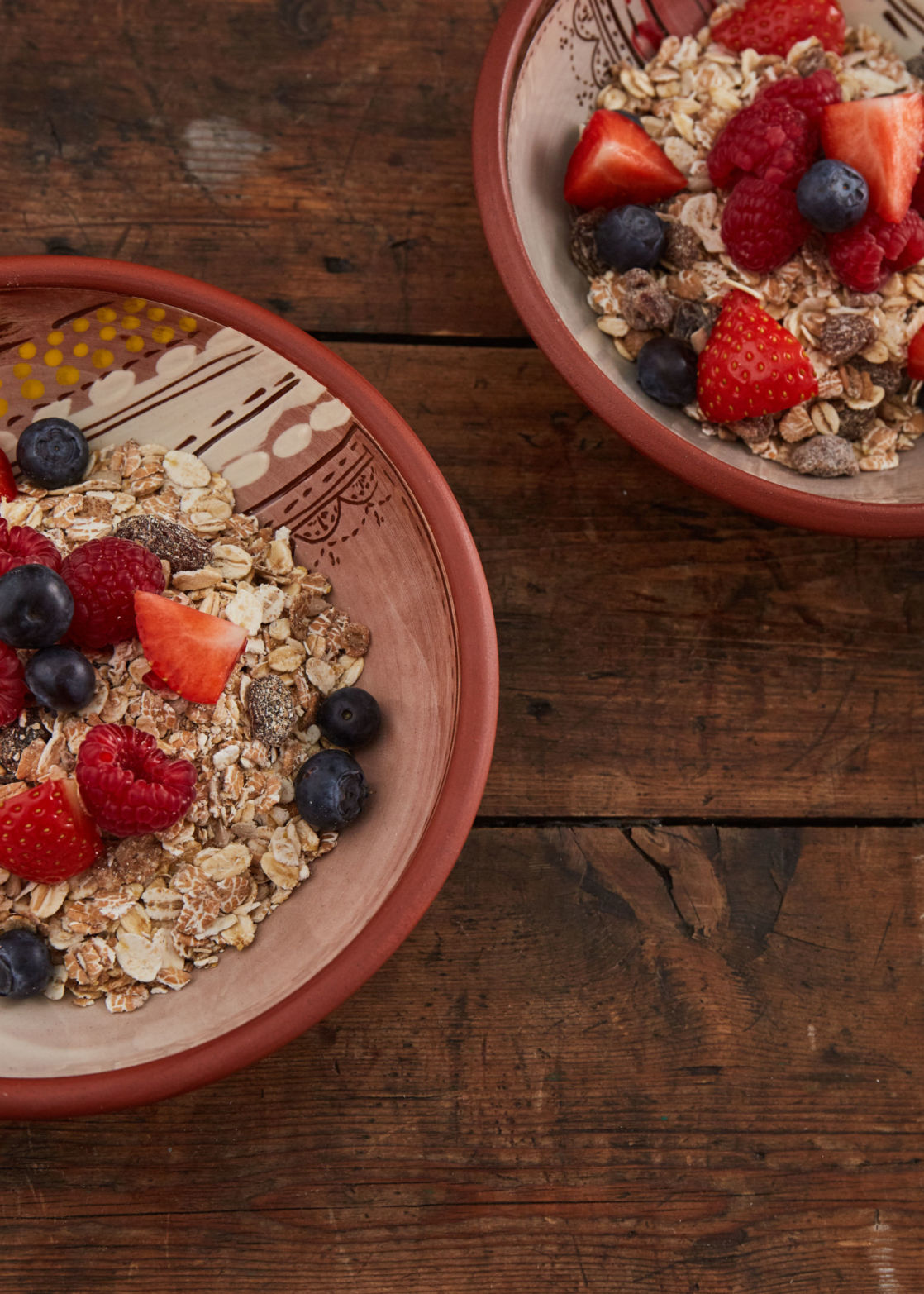
Work by Victoria Claire Dawes; photograph by Yeshen Venema
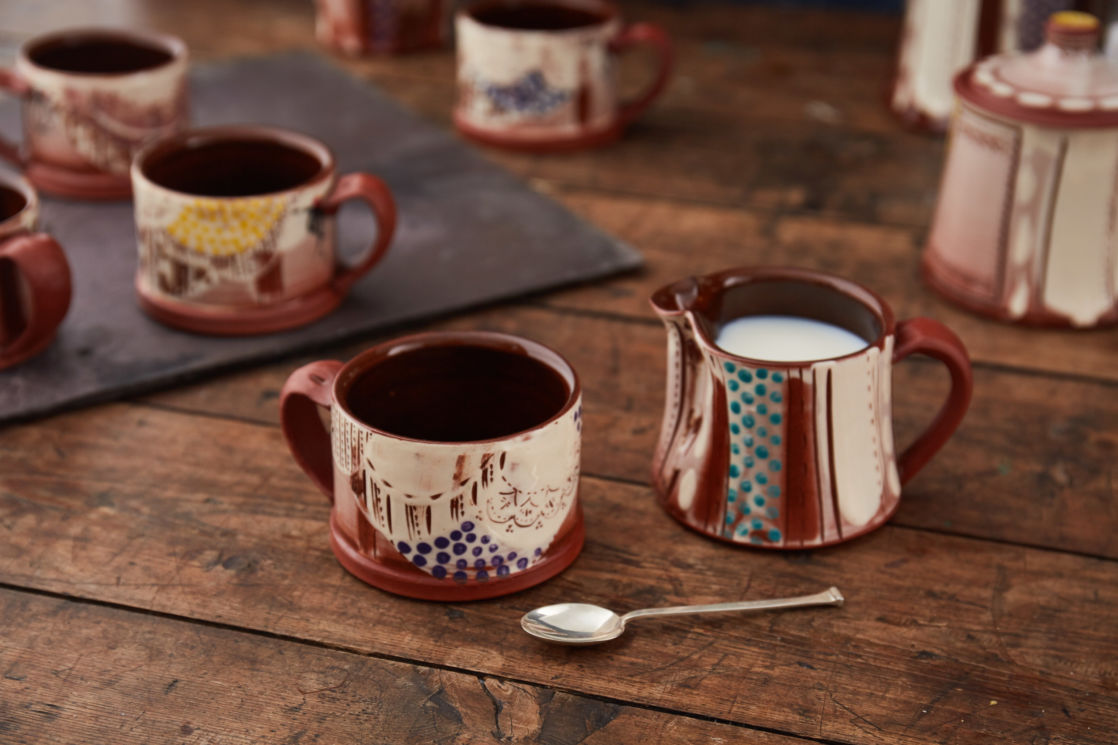
Work by Victoria Claire Dawes; photograph by Yeshen Venema
SENTIMENTAL SLIPWARE
A healthy stream of sales gave Dawes the space to continue refining what she wanted her work to be for others. Decorated with loose yet deliberate marks, she draws on her personal experiences for inspiration. She remarks how from the moment her family first moved from the UK, she has struggled with the concept of belonging. ‘My work has always been a meditation on nostalgia,’ she says. ‘Ever since I first started making, I have been thinking about the objects that make a house a home. A lot of the connections I made related to my grandmother. There is a special moment when you are in a charity shop and you stumble across a teapot or something that is the same as the one your grandma had – I want my work to contain this feeling.’
The visual language of Dawes’ early collections (named Kathleen after her grandmother) speak of churches and lacework. Her decorating process is organic, directed by the thoughts she has in the moment, as opposed to pre-planned designs. ‘Later on, I began to think about my mother who was always great at decorating a space with bright, beautiful fabrics. For as long as I can remember, we have had these couches with big fruit and flowers on them,’ she says. ‘I reference these types of things on the surfaces of my work: a yellow spot might represent a specific yellow print; a swoosh of slip might have been applied while I was thinking about curtains.’
Born from these sentimental origins, Dawes’ tableware carries a casual elegance. Each piece is honest, humble and yet confident enough that they are bound to become future heirlooms for the families who collect them.
TURNING POINT
For five years, the UK provided a secure backdrop to Dawes’ accomplished career. In late 2019, however, life presented her with another crossroads. There were some family health issues back in New Zealand and the aftermath of Brexit had begun to put a strain on making a living from her ceramics. With these factors combined, Dawes decided to move back to her family home. ‘It was hard to leave behind the market I had built in the UK, but my fifth year in business was starting to feel harder than my first. My gut told me moving back to New Zealand was the right thing to do,’ she says. ‘Of course, shortly after the world was struck by the coronavirus pandemic and I felt grateful to have made it out of the UK.’
All of Dawes’ belongings – and a tonne of clay from Stoke-on-Trent – arrived via ship to New Zealand just a week before the country was locked down. The unusual situation hit somewhat of a restart button for Dawes: free of pressure to create and with no craft fairs to attend, she leisurely began to put together her new studio in her garage in Cromwell on South Island.
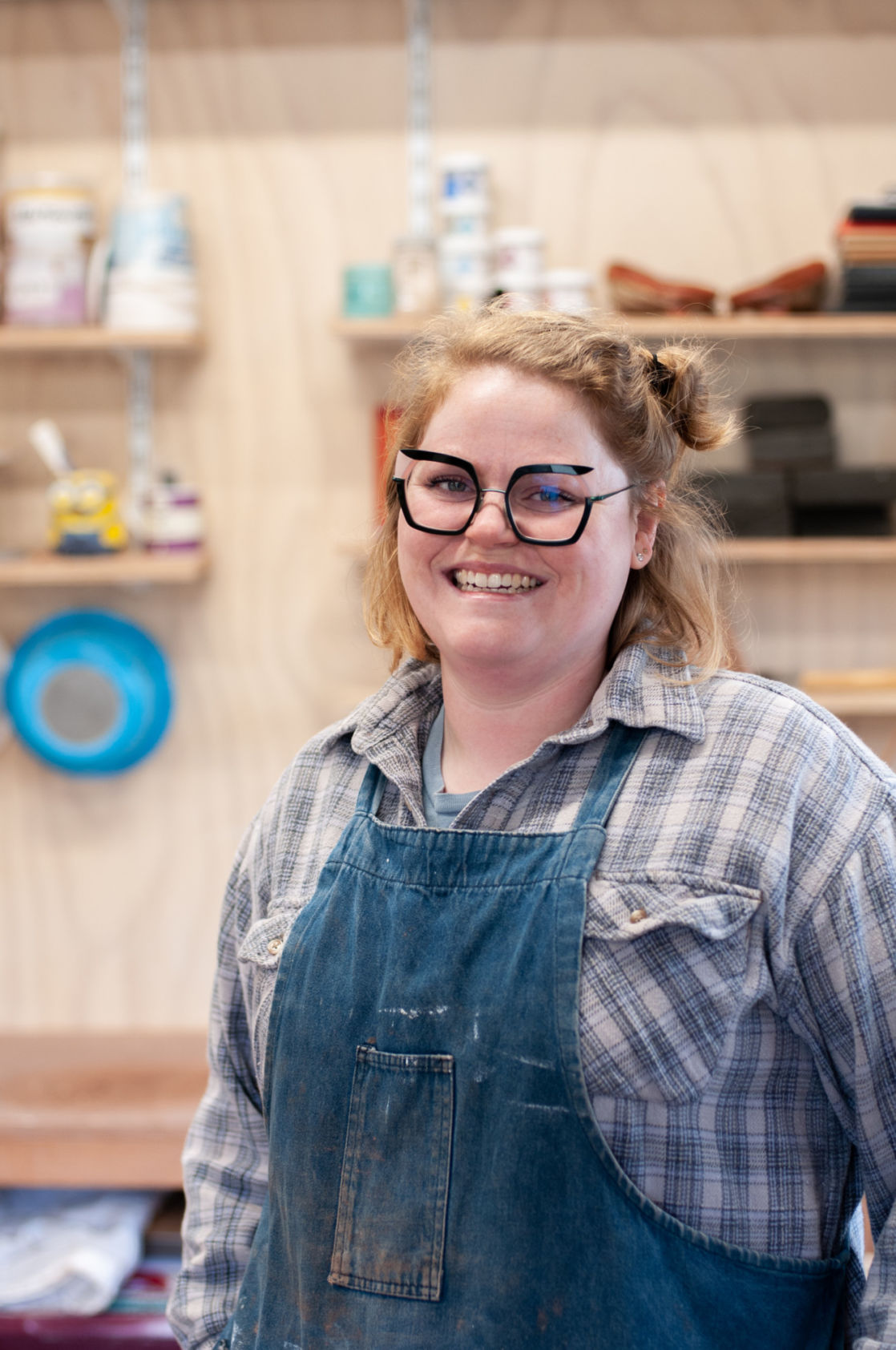
Portrait of Victoria; photograph by Shannon Thomson
The methods of adaptation adopted by craftspeople during the pandemic have been admirable and for Dawes, another new venture was taking shape. ‘In April 2020, I began to train as a Pilates instructor. After all, your body is your primary tool for making pottery,’ she explains. ‘You can buy a new wheel or a new kidney rib but you can’t buy a new body.’
Dawes began Pilates after acquiring repetitive strain injuries from throwing and now with an idyllic rural space, she hopes to combine this practice with her creative one. ‘I find that networking in person is so much more powerful than online – you become someone that people know and want to support,’ she says. ‘There isn’t the same scene of fairs here that there is in the UK and teaching Pilates is a great way to connect with people.’
With the foundations laid for Dawes’ next chapter, she seems to be settling down at least for the immediate future. No matter where life may lead her next, it is clear clay will always be familiar territory.
For more details visit victoriaclairedawes.com
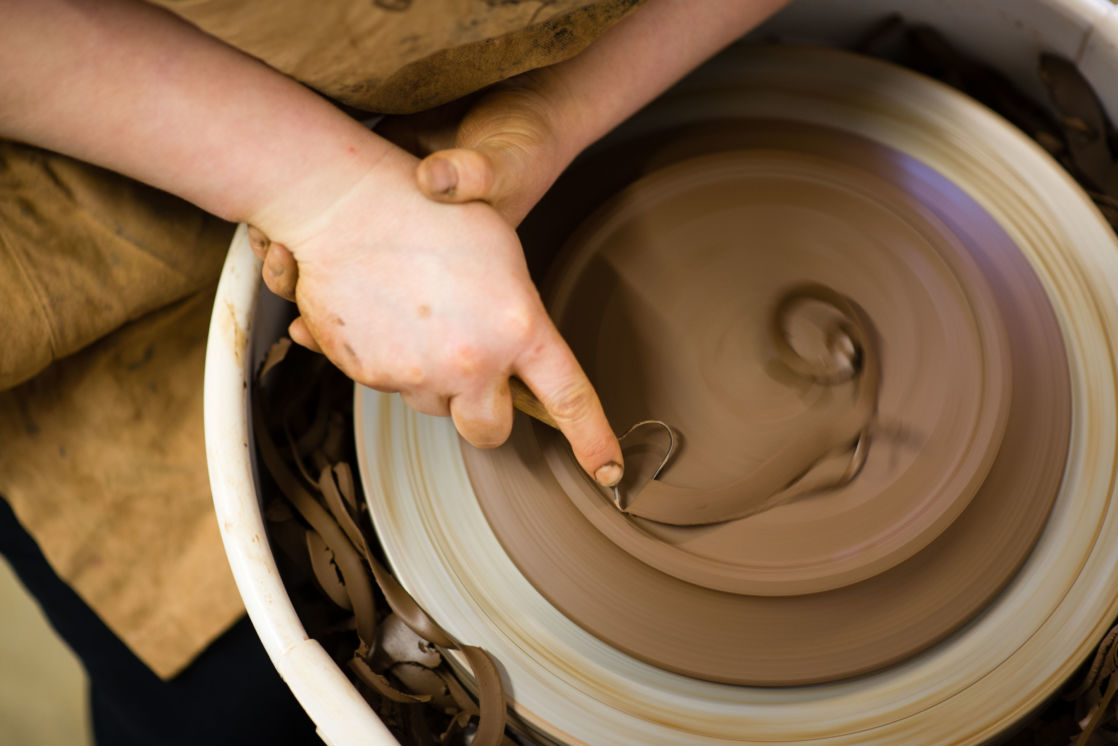
Photograph by Ben Boswell